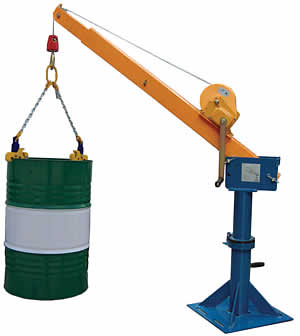

Does the product move/roll while performing a stationary lift? That's a sign of illegal design and build. If you don't see a brake on rear wheels - this is a sign you are dealing with an unsafe machine. A rear brake system is required by ALL safety agencies so the machinery cannot roll away causing an accident. Rear brake: Some small cranes do not even have a required brake. Examine the design - do the boom pieces slide in and out completely? Does the product use illegal connecting pieces such as a jib or fly extension with only one stop? This requires a permanent stop within the boom sections as well as a secondary stop using a pin system. Alternative laws and design rules apply for lifting humans or human extraction such as a rating of 200%.ĭual safety stops on boom sections: All national and global safety agencies require two stop points on each boom section, so that the boom pieces cannot slide out and cause injury. Our cranes are designed, rated and intended to lift materials only. for one minute under load without illegal boom flex to be legal.

That means if the machinery is rated at 1,000 lbs. Rated at 150% (1.5) for materials only: Some local agencies will approve a crane rated at 125% but all of the major national and international safety agencies (like ASME/ANSI/CE) require a design and build to 150% on all point loads on the load chart. Knowing the legal requirements of the small crane industry can save your company headaches, a jobsite accident, costs to replace equipment, lawsuits and even a death. Many foreign and domestic products claim to adhere to industry rules and follow safety agency guidelines and certifications, when in fact they skirt the laws out of ignorance and/or to keep costs low.

Not all small cranes on the market today are actually legal or safe.


 0 kommentar(er)
0 kommentar(er)
